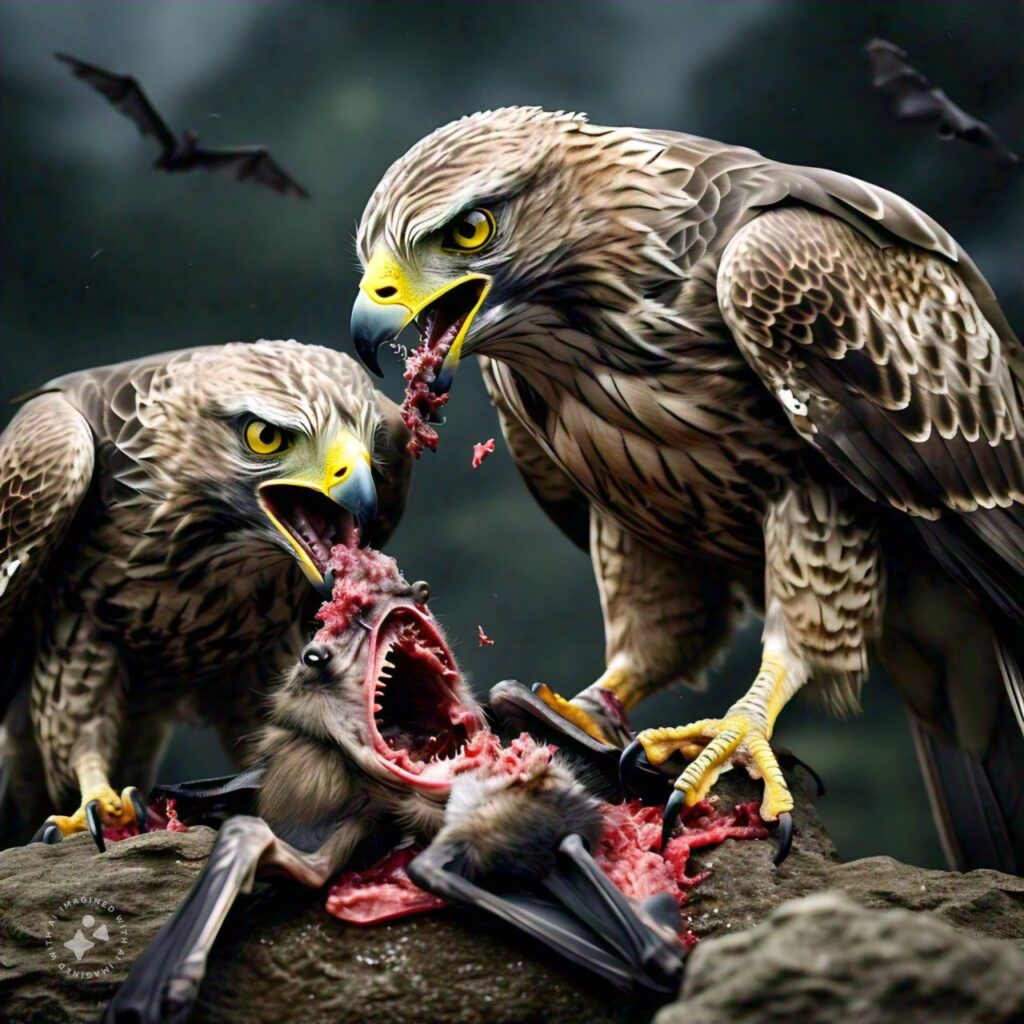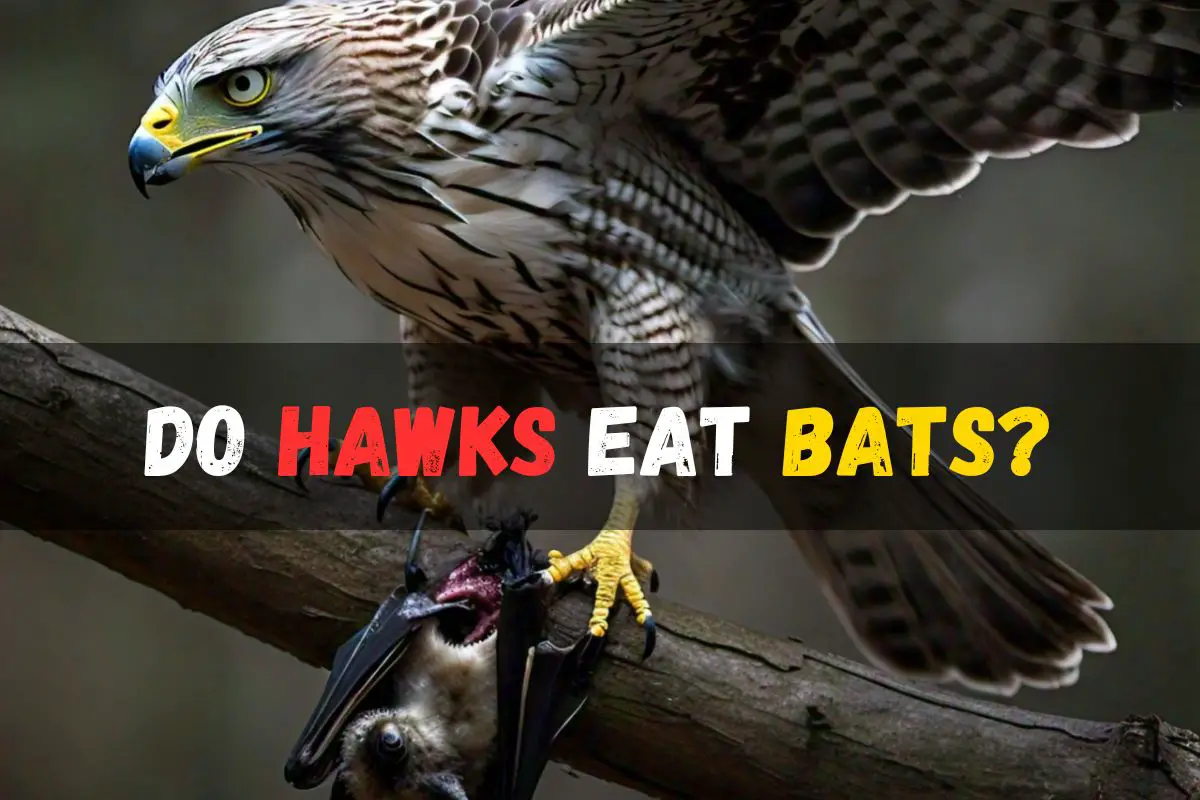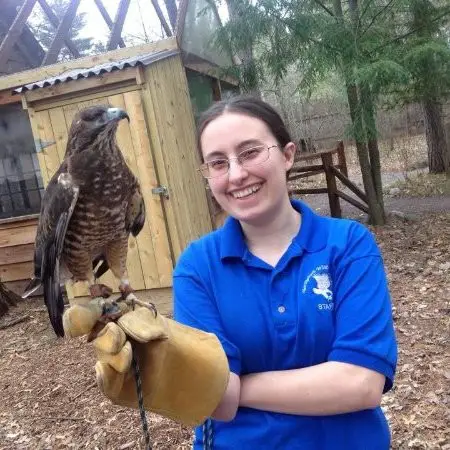As a bird specialist and a Wildlife Emphasis BS graduate with High Honors in Ecology and Field Biology, my passion for avian ecology drives me to explore intriguing questions about bird behavior and feeding habits. One common inquiry that often arises is: Do hawks eat bats? This question touches upon the fascinating intersection of predator-prey dynamics and the unique adaptations of these remarkable birds of prey. Let’s delve into this captivating topic to uncover the reality behind hawks and their dietary preferences, particularly regarding bats.
Do hawks eat bats?
Yes, hawks do eat bats. While birds of prey like hawks primarily hunt small mammals, birds, and insects, they are known to occasionally prey on bats, especially when bats are flying at dusk or dawn. Hawks are skilled hunters with excellent vision and agility, allowing them to catch bats in flight or when roosting during the day.

Hawks, known for their daily nature (active during the day), possess remarkable eyesight that allows them to see well even in low-light conditions like dawn or dusk. This acute vision gives them an advantage when hunting small, fast-moving prey like bats, which are typically nocturnal (active at night). Despite this difference in activity times, hawks have been observed preying on bats, utilizing their keen eyesight to spot them in flight.
The hunting strategy of hawks involves patience and agility. They wait for the opportune moment to strike, using their sharp talons to snatch bats swiftly out of the air. Although bats might not constitute the most common prey for hawks, they are certainly not uncommon due to the hawks’ ability to adapt their hunting techniques to catch them.
Do Hawks Eat Deer?
Behavioral Adaptations and Predatory Techniques
Hawks have developed specific behavioral adaptations and predatory techniques when targeting bats, overcoming the challenges posed by these elusive nocturnal creatures.
- Timing and Environment: Some hawk species adjust their hunting behavior to take advantage of twilight periods when bats transition between roosting sites and foraging areas. This allows hawks to catch bats during moments of reduced flight agility, maximizing their chances of success.
- Stealth and Ambush: Hawks rely on stealth and surprise when targeting bats. They may perch near known bat roosts or fly silently above potential foraging areas, waiting for the opportune moment to strike. By minimizing movement and maintaining a concealed position, hawks increase the likelihood of a successful ambush.
- Aerial Pursuit and Precision: Certain hawk species possess exceptional aerial agility and speed, enabling them to engage in aerial pursuits of bats. They use calculated flight paths and sharp turns to match the bat’s maneuvers, gradually closing in for a precise strike with their talons.
- Visual Acuity and Hunting Strategy: Hawks have keen eyesight, even in low-light conditions, which aids in tracking bats during flight. They capitalize on their visual acuity to anticipate the bat’s movements and execute well-timed attacks. This requires precise coordination of flight and hunting skills.
- Adaptation to Bat Behavior: Over time, some hawk populations may have adapted specialized hunting techniques tailored to capture bats. This includes learning to predict bat flight patterns, exploit roosting locations, and refine attack strategies based on the unique behaviors of different bat species.
- Utilization of Natural Features: Hawks may use natural environment features, such as terrain contours or vegetation, to their advantage when hunting bats. They leverage these features to enhance their approach and minimize the bat’s ability to escape or evade capture.
What Type Of Hawk Eats Bats?
Some hawks usually eat bats below we will discuss them in detail.
Bat Hawks
Bat Hawks are unique among hawks due to their specialized diet primarily consisting of bats. These predatory birds possess distinct characteristics that enable them to hunt bats in flight effectively.
Bat hawks, as their name implies, specialize in capturing and consuming bats. Unlike most hawks that have varied diets, bat hawks predominantly rely on bats as their primary food source. Their physical features, such as angular wings and a notable wing gap, are adaptations that aid in their unique hunting behavior. This distinctive wing structure allows them to maneuver swiftly and seize bats mid-flight, swallowing them whole.
Similar in build to falcons, bat hawks exhibit remarkable agility, which is crucial for navigating through swarms of bats during their hunting expeditions. Unlike diurnal hawks which are active during the day, bat hawks are more active at dusk and dawn, and they can even hunt at night if adequate light is available.
Observations suggest that bat hawks predominantly target bats during their hunts, showcasing a high success rate in capturing their airborne prey. This specialized behavior and success rate highlight the unique ecological niche occupied by bat hawks within the realm of avian predators.
Red-Tailed Hawks
The red-tailed hawk’s scientific classification is Buteo jamaicensis. Red-tailed hawks are among the largest species of hawks, known for their robust build and strength. While bats are not their primary food source, red-tailed hawks do occasionally hunt bats, especially during certain times of the year and under specific conditions.

Red-tailed hawks primarily consume land mammals like raccoons, rabbits, and squirrels. They also prey on birds and sometimes target bats, particularly during bat migrations. When hunting bats, red-tailed hawks use their speed and agility to surprise and capture their prey efficiently. They are skilled predators that employ strategic tactics to catch bats in flight.
Cooper’s Hawks
Cooper’s hawks, scientifically known as Accipiter cooperii, are a species of hawk commonly found in woodland habitats. These hawks primarily prey on birds and small animals like rodents, which constitute their main diet. Interestingly, Cooper’s hawks also hunt bats, particularly fruit bats that wander into woodland areas.

Unlike most other hawks that typically hunt birds and mammals, Cooper’s hawks uniquely prefer fruit bats. Fruit bats primarily consume flowers, fruits, and nectar, making them a distinctive target for Cooper’s hawks. This selective hunting behavior sets Cooper’s hawks apart within the hawk species, showcasing their specialized adaptation to woodland environments.
Ferruginous Hawks
The ferruginous hawk, scientifically known as Buteo Regalis, emerges as a distinctive figure. These regal-looking birds, the largest among the Buteo hawks, exhibit a feeding behavior that sets them apart from their counterparts. Their diet encompasses a spectrum ranging from small to medium-sized mammals, birds, and even insects.

However, it’s their adeptness at hunting bats that truly captures attention. Unlike other raptors, ferruginous hawks employ a unique tactic when pursuing these nocturnal creatures. Rather than engaging in aerial combat, they execute a precision dive bomb towards flying bats. Upon impact, they skillfully strike the nape of the bat, swiftly dispatching their prey.
What distinguishes the ferruginous hawks further is their post-capture behavior. Instead of immediately feeding on their quarry mid-air, they secure the captured bat and transport it to a safe location for consumption. Interestingly, their preferred targets often include one of the largest bat species, the Flying Foxes.
Do Hawks Go Into Caves To Hunt?
Hawks are predominantly open-area hunters, relying on their keen vision to spot prey from high perches. Nonetheless, some hawk species exhibit adaptable behavior, including venturing into caves for hunting purposes. While this behavior isn’t typical for all hawks, certain species inhabit caves year-round. When hunting within caves, a hawk strategically positions itself near the cave entrance, patiently awaiting prey. Once an animal emerges, the hawk swiftly seizes it with its talons and carries it away to consume in a secluded setting. Therefore, while not a widespread hunting strategy among hawks, entering caves for hunting is indeed observed among specific species, demonstrating their versatile and opportunistic nature.
Do Hawks Eat Cats?
Why Is Bat Hunting Difficult For Hawks?
Bat hunting presents unique challenges for hawks due to several factors:
- Nocturnal Behavior: Bats are primarily nocturnal, meaning they are active at night when hawks typically do not hunt. This behavioral difference makes it challenging for hawks, which rely heavily on daylight and clear visibility to hunt effectively.
- Flight Patterns: Bats have erratic flight patterns and can maneuver swiftly in various directions, aided by their echolocation abilities. This makes them harder to track and catch compared to diurnal prey that hawks are more accustomed to hunting.
- Roosting Locations: Bats often roost in caves, trees, or other sheltered areas during the day, which may not be easily accessible or suitable for hawks to approach stealthily. This limits the opportunities for hawks to ambush bats during their resting periods.
- Evasive Defense Mechanisms: Bats have evolved effective evasive tactics such as sudden changes in flight direction, high-speed dives, and utilizing their sonar senses to detect obstacles. These defense mechanisms pose significant challenges for hawks attempting to capture them mid-flight.
- Size and Agility: Bats come in various sizes, from small insect-eating bats to larger fruit-eating bats. Their size and agility make them a formidable target for hawks, which need to accurately judge their prey’s trajectory and size before attempting a successful hunt.
FAQ’S
What animal eats a bat?
Animals that eat bats include hawks, owls, house cats, and raccoons. These creatures are known to prey upon bats occasionally. Additionally, natural events such as long winters and fierce storms during migration can also pose risks to bats, leading to their demise in certain circumstances.
What does a hawk eat?
A hawk’s diet typically consists of a variety of animals. Hawks primarily prey on mammals like voles, rats, rabbits, and ground squirrels. They also consume birds, including those as large as pheasants, and reptiles, particularly snakes. In addition, hawks sometimes eat bats, frogs, toads, insects, and other creatures. They may also scavenge on carrion when other food sources are scarce. Therefore, a hawk’s diet encompasses a diverse range of animals depending on its location and the season.
What eats bats in the desert?
In the desert, bats like the spotted bat are preyed upon by various predators such as owls, raccoons, and skunks. These animals hunt bats as part of their natural diet, posing a threat to bat populations in their desert habitat. Additionally, human-induced changes to the desert environment also contribute significantly to the challenges faced by bats like the spotted bat.
Are bats safe to eat for Hawk?
Yes, bats are indeed a food source for certain species of hawks. Hawks are skilled predators that can hunt bats as part of their diet. They are known for their ability to catch flying prey, including bats, using their agility and sharp talons. In nature, hawks play a role in controlling bat populations by preying on them. So, for hawks, bats are considered a suitable and sometimes preferred food source.


